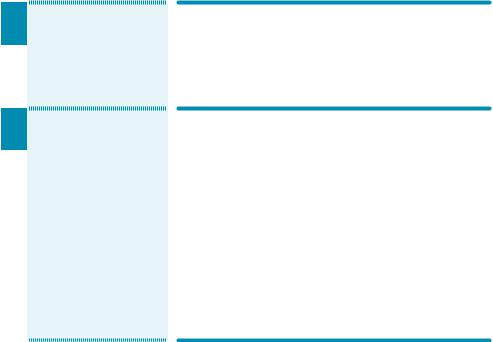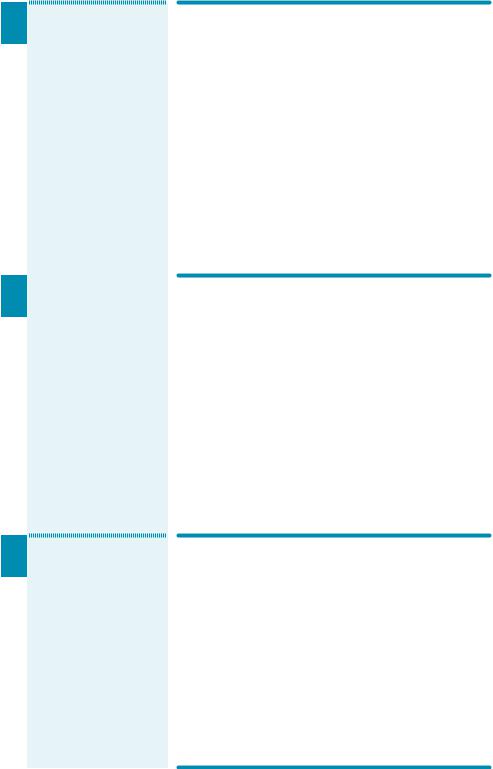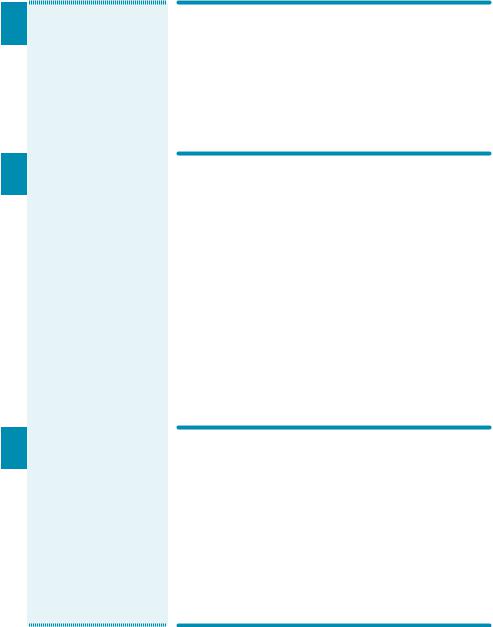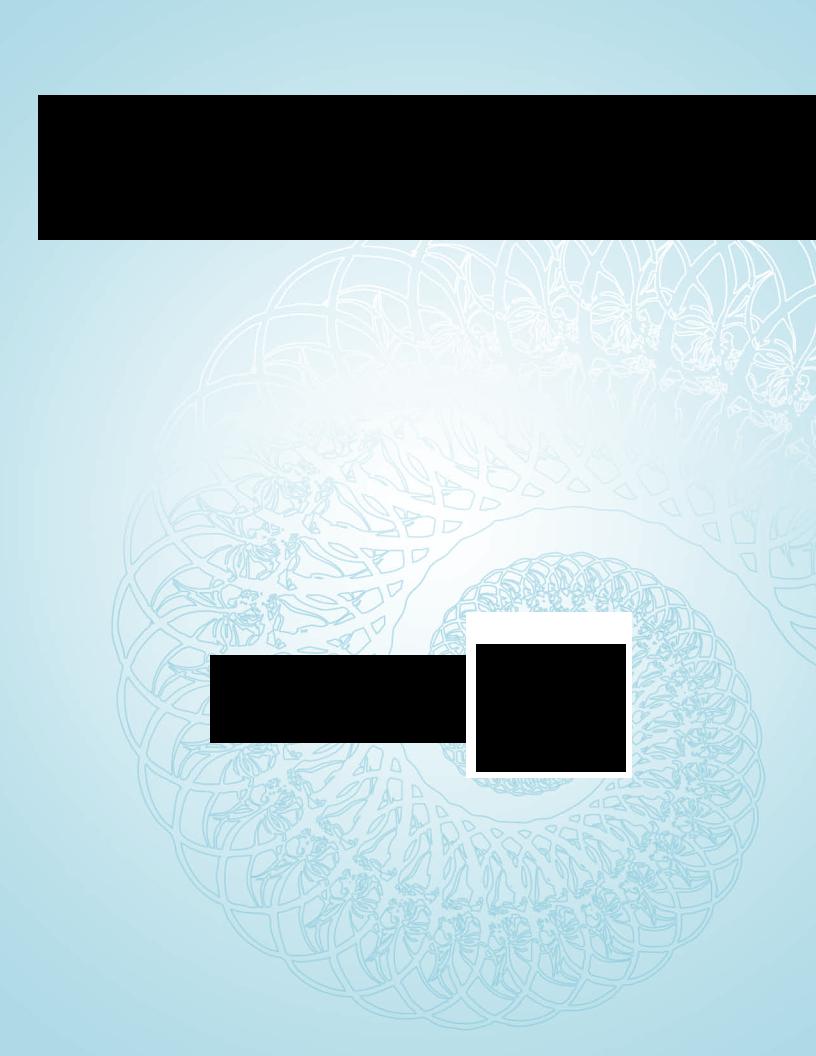
TIMSS2011_Frameworks
.pdf
reasoning and of an understanding of the investigation of cause and effect. They are expected to evaluate and make decisions, weigh advantages and disadvantages of alternative materials and processes, consider the impact of different scientific endeavors, and evaluate solutions to problems. By the eighth grade, in particular, students should consider and evaluate alternative explanations, extend conclusions to new situations, and justify explanations based on evidence and scientific understanding. Considerable scientific reasoning also is involved in developing hypotheses and designing scientific investigations to test them, and in analyzing and interpreting data. Abilities in this area are introduced at a very basic level in primary school and then further developed throughout students’ science education in middle and secondary school.
Some items in this cognitive domain may focus on unified concepts and major conceptual themes, requiring students to bring together knowledge and understanding from different areas and apply it to new situations. As such, they may involve the integration of mathematics and science and/or the integration and synthesis of concepts across the domains of science.
1Analyze
2Integrate/Synthesize
Analyze problems to determine the relevant relationships, concepts, and problem-solving steps; develop and explain problem-solving strategies.
Provide solutions to problems that require consideration of a number of different factors or related concepts; make associations or connections between concepts in different areas of science; demonstrate understanding of unified concepts and themes across the domains of science; integrate
mathematical concepts or procedures in the solutions to science problems.
TIMSS 2011 science Framework | 85

3 |
|
Hypothesize/ |
Combine knowledge of science |
|
|
Predict |
concepts with information from |
|
|
|
experience or observation to formulate |
|
|
|
questions that can be answered by |
|
|
|
investigation; formulate hypotheses as |
|
|
|
testable assumptions using knowledge |
|
|
|
from observation and/or analysis of |
|
|
|
scientific information and conceptual |
|
|
|
understanding; make predictions about |
|
|
|
the effects of changes in biological or |
|
|
|
physical conditions in light of evidence |
|
|
|
and scientific understanding. |
|
|
|
|
4 |
|
Design |
Design or plan investigations appropriate |
|
|
|
for answering scientific questions or |
|
|
|
testing hypotheses; describe or recognize |
the characteristics of well-designed investigations in terms of variables to be measured and controlled and cause- and-effect relationships; make decisions about measurements or procedures to use in conducting investigations.
5 Draw |
Detect patterns in data, describe or |
||
|
|
Conclusions |
summarize data trends, and interpolate |
|
|
|
or extrapolate from data or given |
|
|
|
information; make valid inferences |
|
|
|
on the basis of evidence and/or |
|
|
|
understanding of science concepts; |
|
|
|
draw appropriate conclusions that |
|
|
|
address questions or hypotheses, and |
|
|
|
demonstrate understanding of cause and |
|
|
|
effect. |
|
|
|
|
86 | Chapter 2

6 |
|
Generalize |
Make general conclusions that go |
|
|
|
beyond the experimental or given |
|
|
|
conditions, and apply conclusions to new |
|
|
|
situations; determine general formulas |
|
|
|
for expressing physical relationships. |
|
|
|
|
7 |
|
Evaluate |
Weigh advantages and disadvantages |
|
|
|
to make decisions about alternative |
|
|
|
processes, materials, and sources; |
|
|
|
consider scientific and social factors |
|
|
|
to evaluate the impact of science |
|
|
|
and technology on biological and |
|
|
|
physical systems; evaluate alternative |
|
|
|
explanations and problem-solving |
|
|
|
strategies and solutions; evaluate |
|
|
|
results of investigations with respect |
|
|
|
to sufficiency of data to support |
|
|
|
conclusions. |
|
|
|
|
8 |
|
Justify |
Use evidence and scientific |
|
|
|
understanding to justify explanations |
|
|
|
and problem solutions; construct |
arguments to support the reasonableness of solutions to problems, conclusions from investigations, or scientific explanations.
TIMSS 2011 science Framework | 87
Scientific Inquiry in TIMSS 2011
In the TIMSS 2011 Science Framework, the processes of scientific inquiry are accepted as fundamental aspects of scientific knowledge inherent in all fields of science and having both contentand skillsbased components. Items and tasks assessing these processes require students to demonstrate knowledge of the tools and methods necessary to do science, to apply this knowledge to engage in scientific investigations, and to use scientific understanding to propose explanations based on evidence. In TIMSS, such items are not considered to be context-free, but always are situated in the context of content objectives (biology, chemistry, etc.) and draw from the full range of skills and behaviors specified in the cognitive domains.
It is expected that students at both grade levels will possess some general knowledge of the nature of science and scientific inquiry, including the fact that scientific knowledge is subject to change, the importance of using different types of scientific investigations in verifying scientific knowledge, the use of basic “scientific methods”, communication of results, and the interaction of science, mathematics, and technology. In addition to this general knowledge, students are expected to demonstrate the skills and abilities involved in five major aspects of the scientific inquiry process:
•Formulating questions and hypotheses
•Designing investigations
•Representing data
•Analyzing and interpreting data
•Drawing conclusions and developing explanations
These aspects of scientific inquiry are appropriate for both fourthand eighth-grade students, but the understandings and
88 | Chapter 2
abilities to be demonstrated increase in complexity across grades, reflecting the cognitive development of students.
The learning of science in the fourth grade is focused on observing and describing and students at this level are expected to be able to formulate questions that can be answered based on observations or information obtained about the natural world. To obtain evidence to answer these questions, they should demonstrate a grasp of what constitutes a “fair test”, and be able to describe and conduct an investigation based on making systematic observations or measurements using simple tools, equipment, and procedures. They also are expected to represent their findings using simple charts and diagrams, identify simple relationships, and briefly describe the results of their investigations. Conclusions drawn from investigations at the fourth grade are expected to be written as an answer to a specific question.
By the eighth grade, students should demonstrate a more formalized approach to scientific investigation that involves more evaluation and decision-making. They are expected to be able to formulate a hypothesis or prediction based on observation or scientific knowledge that can be tested by investigation. They are expected to demonstrate an understanding of cause and effect and the importance of specifying variables to be controlled and varied in well-designed investigations. They may also be required to make more decisions about the measurements to be made and the equipment and procedures to use. In addition, students at this level are expected to use appropriate terminology, units, precision, format, and scales. They should also demonstrate more advanced data analysis skills in selecting and applying appropriate mathematical techniques and describing patterns in data. Eighth-grade students may be expected to evaluate the results of their investigation with respect to the sufficiency of their data for supporting conclusions that address the question or hypothesis under investigation.
TIMSS 2011 science Framework | 89
The assessment of both fourthand eighth-grade students’ ability to provide explanations based on evidence from scientific investigations provides another measure of their understanding and application of related science concepts. By the eighth grade, it is expected that students will be able to formulate explanations in terms of cause-and-effect relationships between variables and in light of scientific understanding. At this level, students may also begin to consider alternative explanations and apply or extend their conclusions to new situations.
90 | Chapter 2

TIMSS 2011
Contextual Framework
Chapter 3


Chapter 3
TIMSS 2011 Contextual Framework
Overview
This chapter provides the foundation for the information that will be collected via the TIMSS background questionnaires given to the students themselves as well to their classroom teachers and school heads or principals. Participating countries also complete questionnaires about the national contexts and curriculum for instruction in mathematics and science. Because learning takes place within a context and not in isolation, TIMSS makes every attempt to collect information about the important factors that foster improved teaching and learning in mathematics and science. The questionnaires concentrate on procedures and practices that have been shown to be effective in increasing achievement in mathematics and science. In this way, countries can better evaluate their TIMSS results; in terms of the prevalence of the home or school situation or instructional practice in their country and its relationship with student achievement.
There are numerous contextual factors that affect students’ learning. For example, type of school, school resources, instructional approaches, teacher characteristics, student attitudes, and home support for learning contribute heavily to student learning and achievement. For a fuller appreciation of what the TIMSS achievement results mean and how they may be used to improve student learning in mathematics and science, it is important to understand the contexts in which learning takes place. TIMSS in every cycle collects a range of information about these contexts for learning, together with assessing students’ performance in
TIMSS 2011 Contextual Framework | 93
mathematics and science. Just as the mathematics and science frameworks describe what should be assessed in those areas, the contextual framework identifies the major characteristics of the educational and social contexts that will be studied with a view to improving student learning.
Students in their fourth or eighth year of schooling typically have gained most of their mathematics and science learning at school and home, influenced to some extent by experiences outside of school. School, classroom, and home environments that support each other can create extremely effective climates for learning. To reflect this situation, the TIMSS 2011 Contextual Framework encompasses four broad areas:
•National and Community Contexts
•School Contexts
•Classroom Contexts
•Student Characteristics and Attitudes
The TIMSS Curriculum Model
Building on IEA’s experience and the previous cycles of TIMSS, TIMSS 2011 uses the curriculum as a major organizing concept in considering how educational opportunities are provided, and the factors that influence how these opportunities are used effectively. TIMSS examines the curricular goals, how the educational system is organized to facilitate the implementation of these goals, and how effectively these goals are attained.
At the national and community level, for example, the value systems of the people, the population demographics, and the amount
94 | Chapter 3
